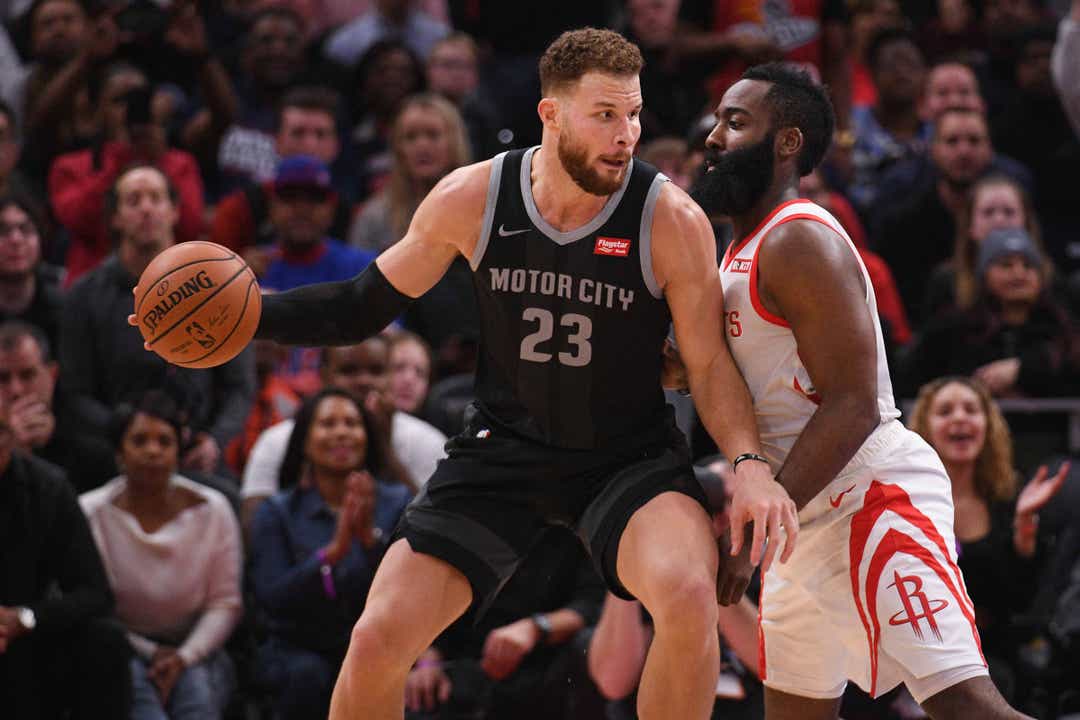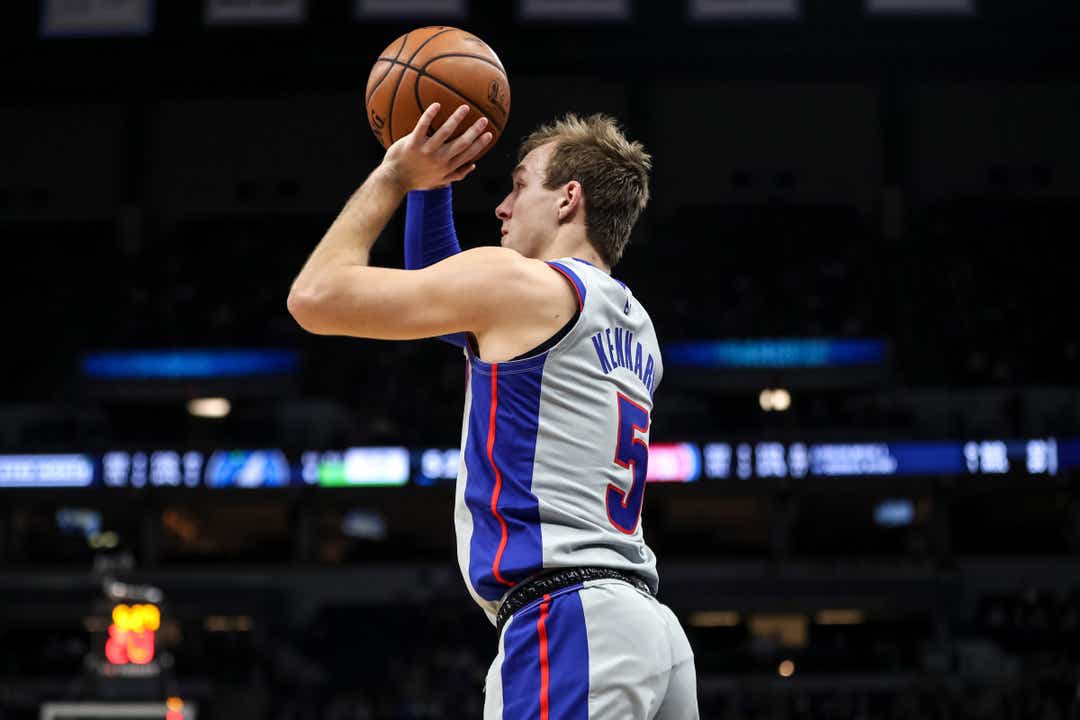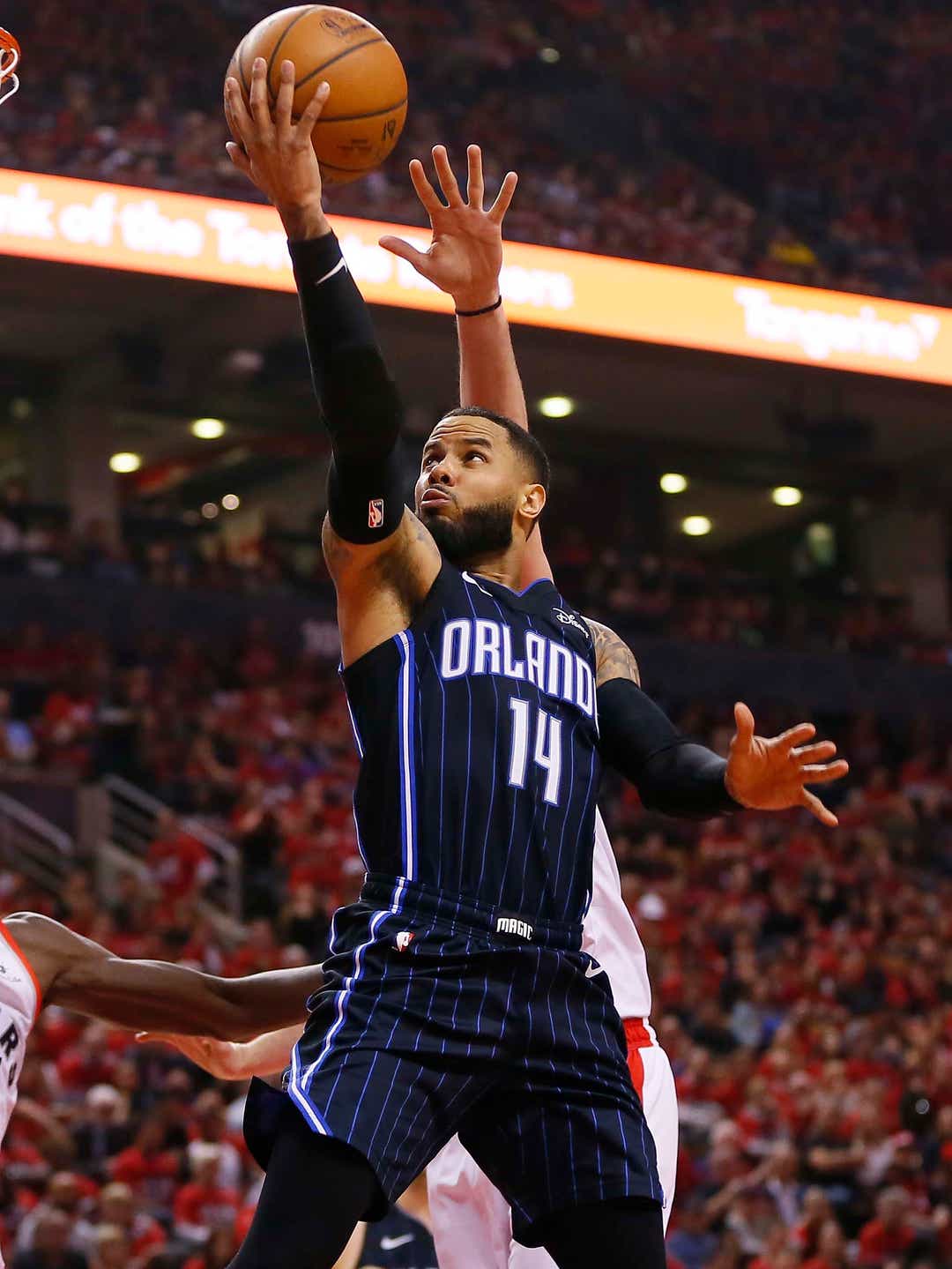When the Detroit Pistons’ 2019-20 season tipped off on Oct. 23, their starting lineup consisted of Reggie Jackson, Bruce Brown, Tony Snell, Markieff Morris and Andre Drummond.
By the end of the season, Snell was the only remaining member of that group who was still active on the roster, thanks to injuries, trades and post-deadline roster moves.
In total, 32 starting lineups took the floor for the Pistons last season, according to basketball-reference.com. It’s an astronomical number, especially since they only played 66 total games — it means head coach Dwane Casey made a lineup change nearly every other game.

[ Pistons want Blake Griffin to ‘kick ass’ next year. What does that mean for rebuild? ]
And since more roster changes are imminent, through the draft and free agency, we can reasonably assume the Pistons are far from finished with lineup tinkering.
With the seventh pick in the 2020 NBA draft and approximately $30 million in available cap space, general manager Troy Weaver has several tools at hand to remake Detroit’s roster. Given how unpredictable 2020 has been, trying to predict next year’s opening night starting five could be futile. But we’ll give it a shot.
Narrowing down the field
A whopping 16 players started at least one game for the Pistons last season. For simplicity’s sake, here are the eight players who are either under contract for next season, entering restricted free agency or have a player option.
• Bruce Brown
• Tony Snell
• Luke Kennard
• Blake Griffin
• Derrick Rose
• Svi Mykhailiuk
• Thon Maker
• Sekou Doumbouya
Of those eight, I think there are two who are likely to start, regardless of any potential moves: Blake Griffin and Luke Kennard.
If Griffin is healthy, the chances are slim-to-none that the Pistons will acquire a better big man. He’s only a season removed from career-high averaged of 24.5 points, 7.5 rebounds and 5.4 assists, and Casey recently confirmed that he has no plans to reduce Griffin’s role next season. This is a safe pick, assuming the front office doesn’t move him.
Health will also be a factor for Kennard, who only played 28 games last season due to tendinitis in both knees. But he started 25 games and played some of his best basketball, averaging 15.8 points, 4.1 assists, 3.5 rebounds and hitting close to 40% of his 3-pointers.

Given that addressing the point guard position appears to be Detroit’s biggest priority, it seems unlikely that the Pistons will find a wing who combines Kennard’s shooting and secondary playmaking. Kennard is healthy and has earned his position in the starting lineup.
[ Hey, Pistons: No. 7 pick in NBA draft can be heavenly ]
What about Wood?
If Christian Wood returns, I think that he’ll start the opener. Unlike the players mentioned earlier, Wood is an unrestricted free agent. His path to returning next season is relatively straightforward, but more complicated than for players already under contract or entering restricted free agency.
[ Wood’s breakout shouldn’t be stopped by coronavirus. Here’s why ]
After a breakout season that saw him average 21.9 points, 9.4 rebounds and 2.3 assists on 56/41/73% shooting splits during his 12 starts, it’s clear that he’s going to be paid. As one of just six teams projected to have cap space, the Pistons are in a great position to bring him back.

The question is, will Wood’s market value exceed what the Pistons are willing to pay? Detroit has Wood’s Early Bird rights, which gives them some flexibility. They can go over the salary cap to retain him, but only if the salary figure is no more than 105% of the league-average salary in 2019-20, or around $10 million. If Wood’s salary is at or below that number, he’ll only count $1.7 million against the cap. More, and it’ll eat into their cap space.
Wood’s production came in a relatively small sample size, but if teams believe he can average anything close to 20 points and 10 rebounds while remaining a threat from outside next season, he’ll be worth far more than $10 million. With that said, there just aren’t many teams with the means to pry him away. The Atlanta Hawks, Charlotte Hornets, Miami Heat, New York Knicks, and Phoenix Suns are the other teams projected to have cap space.
One of them could offer a deal that the Pistons could be reluctant to counter. But assuming Wood’s deal doesn’t exceed $15 million per year, I think Detroit is better served keeping him. They need young talent, and Wood has shown enough juice on offense for the Pistons to buy into his upside as a foundational piece.
With Wood returning, we’ll slot him in as the starting center. It’s not his natural position, though, and a Wood-Griffin frontcourt wouldn’t provide much rim protection. Assuming the Pistons aren’t focused on making the playoffs next year, I think that’s a tradeoff they could live with.
Finding a point guard
The Pistons only have one natural point guard on their roster. And while Derrick Rose is coming off of a strong season, he likely won’t start many games next season, unless his minutes restriction is lifted or injuries force Casey’s hand once again.
That means Detroit will have to turn to the draft or free agency — or both — to find a starter.
I’ve professed my appreciation for Tyrese Haliburton, but I’m not sure if he’ll be available by the time the Pistons pick. He’s a great fit for both the Hawks, at No. 6, and the Minnesota Timberwolves, at No. 1. So far, two prominent mock drafts see him going to the Pistons. I’m skeptical.
[ Pistons’ No. 7 pick: Top international prospect, heralded bigs likely candidates ]
Killian Hayes, who is training with former Piston guard Will Bynum, appears to have a stronger chance of being available at the seventh spot. Let’s say he’ll be Detroit’s pick.
Hayes is widely considered one of the top three point guards in the draft, but is he a Day 1 starter? Casey has preached the importance of having a competent lead guard in the starting lineup .
“To grow as a team, we have to have a starting point guard whether it’s through the draft or free agency to help our players,” Casey said in June. “If your point guard is growing and developing, that stunts the growth of everybody else.”
Hayes probably won’t be ready. At least, not at the beginning of the season.
Given that Rose isn’t a safe bet to play all 82 games, Casey’s comments suggest the Pistons could sign a veteran in free agency. Two cheaper options make sense — Jeff Teague and D.J. Augustin.

Injuries have limited Teague to 101 games during the last two seasons, but when he’s healthy, he’s as steady as they come. If the Pistons are wary, a reunion with Augustin — who averaged 0.6 points and 4.9 assists in 54 games in Detroit in 2014-15 — could be more logical. Augustin is coming off a four-year stint with the Magic and has largely been a backup during that stretch. He averaged 10.5 points and 4.6 assists this season.
The Pistons could also pursue the top option, Fred VanVleet. The 26-year-old had the best season of his career, averaging 17.6 points and 6.6 assists with a 39.0% shooting percentage from 3-point range. He’ll almost certainly fetch more than $18 million a year. It would be a high price for a non-contending Pistons team, but he played under Casey in Toronto and would likely be the franchise’s best point guard ince Chauncey Billups.
Given that the Pistons front office has stated a desire to build a team that is sustainably good, VanVleet may not be a great fit. But he’s young and certainly worth pursuing. My guess is that Toronto will retain him. That leaves Augustin as Detroit’s opening-night starter.
Locating a second wing

The Pistons could also turn to free agency to find a starter at small forward, with Solomon Hill, Maurice Harkless, Jae Crowder available to give the Pistons a veteran presence for an affordable price.
But the best option for Detroit could be turning to one of their young players. Svi Mykhailiuk and Sekou Doumbouya were each solid at times last season, though Mykhailiuk is more proven at this point.
Let’s go with Mykhailiuk as the fifth starter. He hit 40.4% of his 3-pointers last season and also showed upside as a defender. Per Casey, Doumbouya has worked hard this summer to improve his game. He could see an increased role, but Mykhailiuk is the better player right now. If the Pistons are invested in developing their young players, it makes sense to give players already on the roster a chance to grow.
With that, we have our 2020-21 opening night starting lineup:
• PG: D.J. Augustin
• SG: Luke Kennard
• SF: Svi Mykhailiuk
• PF: Blake Griffin
• C: Christian Wood
It’s tough to project the future, and a trade could make this exercise look ridiculous down the road. But with relatively weak free agency and draft classes this offseason, the Pistons may be better served biding their time and making smaller moves for now.
Contact Omari Sankofa II at osankofa@freepress.com. Follow him on Twitter @omarisankofa. The Free Press has started a new digital subscription model. Here’s how you can gain access to our most exclusive Pistons content. Read more on the Detroit Pistons and sign up for our Pistons newsletter.